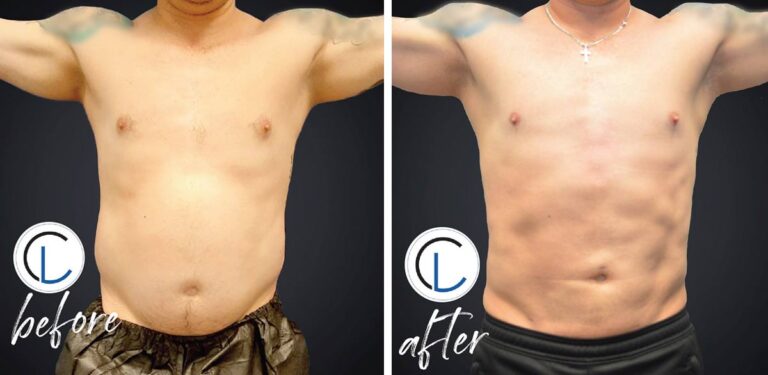Overcoming Obstacles: Liposuction for Obesity
Posted on: March 28, 2024
Qualifying for High-BMI Liposuction
BMI Thresholds
People often wonder if there’s a maximum BMI and how much fat in kg for liposuction candidates, specifically clients. The truth is, most surgeons set a limit. This limit usually falls below a BMI of 30.
It’s crucial to understand this criterion. It helps ensure safety and effectiveness. Patients above this BMI may face increased risks during surgery.
Health Evaluation
Before considering liposuction, a thorough health assessment is necessary. Doctors look at overall health, not just weight.
They check heart health, blood pressure, and more. This ensures the body can handle the procedure safely.
Weight Stability
Surgeons also emphasize the importance of stable weight before liposuction. Significant weight fluctuations can affect results.
Patients should maintain their current weight for several months prior. This stability is key for lasting outcomes.
Understanding BMI Limits
BMI Thresholds
The Body Mass Index (BMI) serves as a critical metric. It helps determine if one is eligible for liposuction, especially for those with higher BMIs.
Doctors often set a BMI limit of 30 for traditional liposuction. This threshold ensures safety and effectiveness. However, advancements have extended possibilities for individuals above this limit. They now have access to specialized techniques designed for their needs.
Safety First
Safety remains paramount in the realm of cosmetic surgery. High-BMI individuals face more risks during and after liposuction. These include complications from anesthesia and slower recovery times.
Surgeons conduct thorough assessments before proceeding. They evaluate overall health, fat distribution, and potential risks. This careful approach maximizes patient safety and outcomes.
Realistic Expectations
Setting realistic expectations is crucial for patients considering high-BMI liposuction. Liposuction is not a weight-loss solution but a body contouring procedure.
Patients should not expect drastic weight reduction overnight. Instead, they’ll see improvements in specific areas where fat is removed. Combining liposuction with lifestyle changes leads to the best results.
Assessing Safety in High-BMI Lipo
Risk Evaluation
Patients with a high Body Mass Index (BMI) face increased surgical risks. These include complications during and after liposuction.
Doctors must evaluate each case carefully. They consider the patient’s overall health, not just BMI. This ensures the procedure is safe for them.
Anesthesia Concerns
High-BMI individuals may experience issues with anesthesia. Their weight can affect how their body responds to sedatives.
Anesthesiologists adjust dosages accordingly. They monitor patients closely throughout the procedure to prevent complications.
Post-Op Care
Recovery might be slower for those with a high BMI. They are at a higher risk of infection and delayed wound healing.
Patients must follow post-op instructions strictly. This includes maintaining cleanliness and attending all follow-up appointments.
Liposuction vs Weight Loss Procedures
Safety Profile
Liposuction, especially for those with high BMI, poses certain risks. It requires careful assessment. Traditional weight loss methods, on the other hand, might be slower but they’re generally safer.
People often worry about the safety of liposuction. They have good reason. This procedure involves removing fat directly from under the skin. It can lead to complications like infections or uneven body contours. Weight loss procedures such as diet changes and exercise pose fewer risks. They promote gradual, sustainable fat loss without surgery.
Effectiveness
Liposuction offers immediate results. Weight loss procedures demand time and commitment.
For someone seeking instant changes in their body shape, liposuction seems appealing. It removes fat cells from targeted areas right away. However, it doesn’t guarantee permanent weight loss if lifestyle habits remain unchanged. Traditional weight loss strategies take longer to show results. But they help in building healthy habits that ensure long-term success.
Cost Comparison
Liposuction comes with a higher upfront cost than most non-surgical weight loss methods.
Undergoing liposuction can be expensive. The costs include not just the surgery but also recovery care and possible follow-up treatments. In contrast, adopting a healthier lifestyle might require some initial investment in nutrition plans or gym memberships. Yet, these expenses are generally lower and spread out over time.
Enhancing Contours for Plus-Sized Bodies
Target Areas
Liposuction specifically targets stubborn fat deposits that don’t respond to diet and exercise. For plus-sized individuals, common areas include the abdomen, hips, thighs, and arms.
These targeted procedures help in sculpting the body, creating a more defined silhouette. They do not replace weight loss but complement efforts to tone the body.
Procedure Insights
The process involves inserting a small tube, called a cannula, into the body. The surgeon then removes excess fat through this tube.
It’s crucial to choose an experienced surgeon. Their expertise ensures safety and achieves the desired contours with minimal scarring.
Recovery Journey
Recovery varies among patients but generally includes rest and limited movement. Swelling and bruising are common but subside over weeks.
Patients often wear compression garments to support healing. Full recovery can take up to six months, during which gradual improvements in body shape become evident.
Recovery Insights for Plus-Size Liposuction
Healing Time
The healing process after liposuction can vary. It often spans several weeks.
Patients should expect some swelling and bruising. These symptoms usually diminish within a few weeks. However, full recovery might take up to six months. During this period, wearing compression garments is crucial. They help reduce swelling and improve contouring results.
Activity Limits
Post-surgery, patients face restrictions on physical activities.
For the initial two weeks, it’s essential to avoid strenuous exercises. Light walks are encouraged to promote circulation but avoid anything more vigorous. Gradually, as the body heals, one can resume more intensive activities around four to six weeks post-operation.
Follow-up Care
Regular check-ups play a key role in recovery.
These appointments allow the surgeon to monitor healing progress and address any concerns promptly. They typically occur within the first week after surgery and continue at intervals for up to six months. Adhering to these visits ensures optimal outcomes and reduces complications risk.

Comparing Large-Volume Lipo and Tummy Tuck
Recovery Time
Large-volume liposuction, designed for individuals with a higher BMI, often leads to extended recovery periods. Patients might need several weeks before resuming daily activities. In contrast, tummy tuck surgery, while also demanding in terms of recovery, usually has a more predictable timeline. Most people return to normal life within 2-3 weeks.
Recovery from large-volume lipo can be unpredictable. Some patients bounce back quickly, while others face complications like swelling or fluid accumulation. Tummy tucks involve removing excess skin and fat, which means the area heals in a more controlled manner.
Aesthetic Results
Tummy tucks provide dramatic changes by tightening muscles and removing excess skin. The results are often immediately visible, offering a more contoured and flat abdomen. Large-volume liposuction focuses on fat removal over a larger area. It can significantly reduce weight but may not address issues like loose skin.
Patients seeking overall weight reduction might prefer large-volume lipo. Those aiming for a sculpted abdomen often choose a tummy tuck. Both procedures have their merits depending on the individual’s goals.
Cost Implications
Cost-wise, both procedures represent significant investments. Tummy tucks tend to be more expensive due to the complexity of the surgery. Liposuction costs vary based on the amount of fat removed but can be less costly for those only looking to remove fat without skin alteration.
In choosing between the two, patients must weigh their financial ability against their desired outcomes. Insurance coverage varies widely, so it’s crucial to consult with providers beforehand.
Making the Right Choice for Plus-Size Liposuction
Doctor Expertise
Choosing a skilled doctor is crucial. They should have experience in plus-size liposuction. This ensures safety and effectiveness.
Patients must research their doctor’s background. Look for certifications and patient reviews. These factors indicate a doctor’s expertise in handling complex cases.
Procedure Details
Understanding the procedure is essential. It involves removing fat from specific body parts. The goal is to reshape these areas, not just remove weight.
Patients should discuss their expectations with the doctor. A clear understanding helps set realistic goals. It also aids in preparing mentally and physically for the process.
Recovery Expectations
Recovery varies by individual. Most patients need a few weeks to recover fully. During this time, following the doctor’s advice is critical.
Patients should expect some discomfort and swelling. However, proper care can minimize these effects. Staying hydrated and wearing compression garments help in faster recovery.
Financial Consideration
Liposuction costs can be high. Insurance rarely covers cosmetic procedures. Patients must plan their finances accordingly.
e clinics offer payment plans or financing options. Exploring these can make the procedure more accessible.
Choosing plus-size liposuction involves careful consideration of various factors. Doctor expertise and procedure details are paramount. Understanding recovery expectations and financial considerations also plays a significant role in making an informed decision.
Summary
Liposuction for those with a high BMI isn’t just about shedding fat; it’s a step towards reshaping your body and boosting your confidence. We’ve walked you through the essentials—from qualifying criteria and safety considerations to recovery insights and procedure comparisons. This knowledge arms you with the power to make informed decisions about enhancing your contours, understanding the differences between liposuction and other weight loss procedures, and choosing what’s best for your plus-size body.
Now, it’s up to you. Take this information, consult with a trusted specialist, and embark on your journey towards a body that feels more like you. Remember, the right choice is one that aligns with your health goals, aesthetic desires, and personal well-being. Ready to take the next step? Start by scheduling a consultation today. Your path to body confidence begins now.
Frequently Asked Questions
Can I qualify for liposuction if I have a high BMI?
Yes, individuals with a high Body Mass Index (BMI) can qualify for liposuction. However, it’s crucial to assess safety and suitability on an individual basis with a healthcare professional.
What is the BMI limit for undergoing liposuction?
While there’s no strict BMI limit for liposuction, higher BMI levels may introduce additional considerations for safety and effectiveness. It’s best to consult with a surgeon to understand your specific case.
Is liposuction safe for obese individuals?
Liposuction can be safe for obese individuals when performed by experienced surgeons and with proper pre-operative assessments. Safety protocols are paramount in high-BMI lipo procedures.
How does liposuction compare to weight loss surgery?
Liposuction is primarily cosmetic, aiming to contour the body by removing fat from specific areas, while weight loss surgery targets significant weight reduction by altering the digestive system’s function.
Can liposuction enhance contours in plus-sized bodies?
Yes, liposuction can effectively enhance the contours of plus-sized bodies by targeting and reducing fat in specific areas, improving overall body shape.
What should I expect during recovery from plus-size liposuction?
Recovery from plus-size liposuction may involve swelling, bruising, and discomfort for a few weeks. Following your surgeon’s post-operative care instructions is crucial for a smooth recovery process.
How do large-volume lipo and tummy tuck compare?
Large-volume liposuction removes significant amounts of fat from various body parts, while a tummy tuck specifically tightens abdominal muscles and removes excess skin. The choice between them depends on your cosmetic goals and medical advice.




